|
View as a webpage
|

Mecca Hills Wilderness
|
|
ISSUE 841 - February 21, 2019
|
|
|
- Track the Bloom
- Headlines and Highlights
- BLM and DOI Highlights
- Wildlife Question of the Week
- Upcoming Events
|
|
Upcoming travel plans? Please remember to check road conditions and closures. Travelers can also download the QuickMap app, quickmap.dot.ca.gov, or call 1-800-427-7623 for constantly updated highway information. (California Department of Transportation)

#TracktheBloom
This time of year there is a lot of #CAlove, especially with the much anticipated wildflowers. We will continue sharing updates from your public lands to help visitors know what to realistically expect when it comes to wildflower blooms. As you make plans to #RoadTripCalifornia, please remember the importance of Leave No Trace principles.
As of February 21, 2019, it is currently snowing in Carrizo Plain National Monument, so no big blooms of flowers yet.
Related: Leave No Trace Center for Outdoor Ethics
Related: Theodore Payne Wild Flower Hotline
Related: Desert USA Wildflower Report
|

When Will this Year's Wildflower Super Bloom Happen in the California Desert?
Wildflower enthusiasts and desert lovers alike are wondering: When can we expect this year's super bloom? Recent rain in the Coachella Valley and surrounding areas has experts looking forward to a wildflower boon across the California desert. "This year is definitely shaping up to be a very good wildflower year," says Cameron Barrows, an associate research ecologist at UC Riverside's Center for Conservation Biology. "I've lived here in the Coachella Valley for over three decades, and there have been maybe two to four exceptional wildflower years, and this is one of those." (The Desert Sun)
|
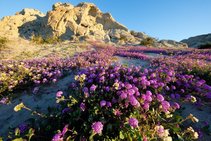
Super Bloom 2019: Where and When to See the 'Showstopping' Wildflower Displays in California and Arizona
Flourishes of wildflowers are starting to spring up in California and Arizona, as experts cross their fingers that a spectacular “super bloom” to rival that seen in spring 2017 could be weeks away. Each year as winter winds down and spring ushers in warmer temperatures, the national parks of the neighboring western states can become dotted with colorful plants. But this spring, the conditions left behind in the wake of last year’s devastating wildfires in southern California and uncharacteristically heavy rainfall could create the perfect storm for a super bloom. (Newsweek)
|

Time to Hit the Road and Explore the Golden State
Endless sunshine, amazing cities, best-in-class theme parks, incredible natural treasures—no matter what you want to do and see on your next vacation, California has it. But here's the best part: California has all the iconic destinations you've dreamed of visiting, plus a countless number of incredible off-the-beaten-track experiences. With our exclusive trip itineraries, you can visit bucket-list landmarks like Yosemite, then follow a wine road or visit a craft brewery. Top theme parks, secret beaches, city finds—they’re all here in easy-to-follow road trips that visit every corner of the state. So start dreaming about your next California vacation—and dream big. (Visit California website) Follow #RoadTripCalifornia!
|
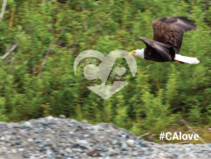
Travelers Share Their Love of California
"We are always heartened to hear from visitors who are passionate about traveling to California, and any time we ask folks to share their #CAlove they are eager to respond. Visit California gathered some comments from people who just can't wait to get back to the state." (Visit California website)
Related: The Bureau of Land Management manages 15 million acres of public lands in California - nearly 15 percent of the state - and 1.6 million acres in northwestern Nevada. Follow us on Facebook and Twitter!
|
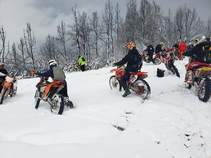
Successful Volunteer Event Benefiting OHV Area
Friends of Cow Mountain for hosted 37 volunteers at the South Cow Mountain OHV Management Area! Thank you for your work removing vegetation encroaching on motorized trails. This OHV area is currently closed due to impacts from the #MendocinoComplex Fires. (Friends of Cow Mountain Facebook)
Related: Donation provides post-fire help for Cow Mountain trails near Ukiah (The Ukiah Daily Journal)
|

AmeriCorps Volunteers Help Hopland Research Center After Wildfires
While people who are familiar with Ciervo-Panoche Natural Area had reported sightings of the endangered San Joaquin kit foxes, nobody really had an idea of how many were there or how large their range was. Knowing this information can be very helpful for our colleagues who manage the area and play a critical role in the conservation of this endangered species. (Smithsonian's National Zoo and Conservation Biology Institute)
|
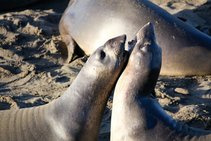
Sex, Birth, Death and Battles Royal: The Greatest Show in California is on the Central Coast
If you’ve driven Highway 1 near San Simeon in the past few years, chances are you’ve noticed the extraordinary northern elephant seal colony at Piedras Blancas Beach. Last spring, when I stopped in after a reporting trip to disaster-prone Big Sur, a docent told me that the very best time to see the seals is mid-January. This, she said, is when the beach is most crowded with the prehistoric looking pinnipeds, birthing and mating and generally carrying on. (Los Angeles Times)
|
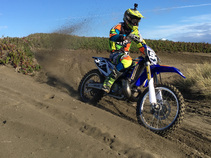
BLM Seeks Comments on 2019 Off-Highway Vehicle Recreation Proposals
The Bureau of Land Management invites the public to comment on its California State Parks, Off-Highway Motor Vehicle Recreation Division, off-highway vehicle recreation proposals for 2019, which are available on the Internet for review and comment from March 5 to May 6 at www.ohv.parks.ca.gov. Approximately 30 projects throughout the state have been proposed, including OHV rules enforcement, operation and maintenance, restoration work and other activities. The proposals are funded through the Grants and Cooperative Agreements Program, sponsored by the state of California, which provides financial assistance to cities, counties, districts, federal and state agencies, educational institutions, federally recognized Tribes and nonprofit entities. (BLM news release)
|

King of the Hammers 2019
King of the Hammers is considered the toughest one-day off-road race in the world. It is the largest off-road race event in North America in terms of both competitors and spectators. It combines desert racing and rock crawling, and has expanded from one race to a series of five races held throughout the week that take place each February on BLM-managed public lands in Johnson Valley, California. The King of Hammers off-road race is the second largest special recreation permit issued by the BLM and attracts approximately 50,000 spectators during the nine-day event. See below for photos from this year's event. (Event photos on the BLM California Flickr) Look up #KOH2019 on Facebook and Twitter for highlights!
Related: KOH week and results (Ultra4 Racing website)
Related: Access to public lands makes events like King of the Hammers possible (Victorville Daily Press)
Related: Multi-agency coordination, planning keeps 2019 King of the Hammers on track for safety (Dvids Hub)
|

BLM and Forest Service Grazing Fees Lowered in 2019
The Federal grazing fee for 2019 will drop to $1.35 per animal unit month for public lands administered by the Bureau of Land Management and $1.35 per head month for lands managed by the USDA Forest Service. This represents a decrease from the 2018 Federal grazing fee of $1.41 per AUM. An AUM or HM—treated as equivalent measures for fee purposes—is the use of public lands by one cow and her calf, one horse, or five sheep or goats for a month. The newly calculated grazing fee was determined by a congressional formula and takes effect March 1, 2019. The fee will apply to nearly 18,000 grazing permits and leases administered by the BLM and nearly 6,500 permits administered by the Forest Service. (BLM news release)
|

Acting Secretary David Bernhardt Visits Martin Luther King, Jr. National Historical Park
On the heels of the National Park Service’s recent acquisition of the birth home and life home of Dr. Martin Luther King, Jr., Acting U.S. Secretary of the Interior David Bernhardt on Wednesday, February 20 visited Martin Luther King, Jr. National Historical Park to underscore the importance of donation partnerships and view the newly acquired properties. (DOI news release)
|
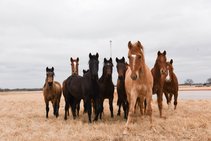
BLM Seeks Nominations for National Wild Horse and Burro Advisory Board
The Bureau of Land Management is seeking nominations to fill three positions on its National Wild Horse and Burro Advisory Board. Selected Board members advise the BLM and U.S. Forest Service from the perspective of a particular interest in wild horse and burro management. The call for nominations released today is for the positions that represent humane advocacy, livestock management and wildlife management interests. (BLM news release)
|
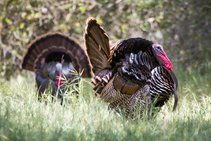
True of False
Wild turkeys can fly at up to 60 miles per hour?
Keep scrolling to find out!
|
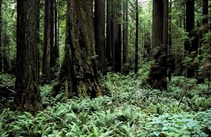
March 1: Public Invited to Free, Guided Birding Walk at Headwaters Forest Reserve
The diversity of bird life in the Headwaters Forest Reserve will be on display in a free, guided birding walk, Friday, March 1, at the Headwaters Forest Reserve. Participants will meet at 10 a.m. at the Bureau of Land Management Elk River Trailhead near Eureka, and then spend three hours spotting birds along a two-mile walk. Wildlife biologist Russ Namitz will lead the outing, helping participants to identify birds by sight, their sounds and other fine points. He will discuss bird habitat, ecology and migration. (BLM news release)
|

March 3, April 7 and May 5: Story Time and Young Explorers at Santa Rosa and San Jacinto Mountains National Monument
Story Hour for children ages 5 to 7: Join us in our Kid’s Corner to hear a story about nature and creatures that live in the desert of the Santa Rosa and San Jacinto Mountains National Monument. Reading will be followed by an indoor or outdoor arts and crafts activity.
Young Explorers for ages 8 and above: Compass and maps are a very important part of your 10 essentials when hiking in the desert. Let’s explore and have fun learning about them!
RSVP required. Event will take place from 1 to 2 p.m. Please visit www.desertmountains.org/calendar or call (760) 862-9984 for more information.
|

Ongoing: Bring Home a Wild Horse or Burro
The BLM Wild Horse and Burro Program is excited to announce nearly 70 events this year as part of BLM's efforts to find good homes for our nation's wild horses and burros. Known for their intelligence, endurance and loyalty, wild horses and burros, with the right training, are outstanding for trail riding, packing, working and have successfully competed for awards in numerous fields from endurance riding to dressage. With more than 81,000 wild horses and burros on BLM-managed public lands, these wild icons of our American history need your help more than ever. Without any natural predators that can control population growth, wild horse and burro herds grow rapidly on the range and can quickly overcome the land's ability to support them. The BLM works to maintain healthy wild herds by gathering excess animals and placing them into good homes. (BLM website)
|
|
WILDLIFE QUESTION OF THE WEEK ANSWER
True. Wild turkeys usually get around by walking or running, but they can fly strongly, and they typically roost overnight in tall trees. Turkeys were formerly considered to belong to a separate family from other chicken-like birds; there are only two species, ours in North America and the Ocellated Turkey in Central America. (Audubon)
|
|
|
News.Bytes
is a publication of the Bureau of Land Management in California.
Bureau of Land Management
California State Office
2800 Cottage Way, Suite W1623
Sacramento, CA 95825
(916) 978-4600
Send comments to the News.Bytes Team | Subscribe to
News.Bytes | Unsubscribe
|
     
|
|
|